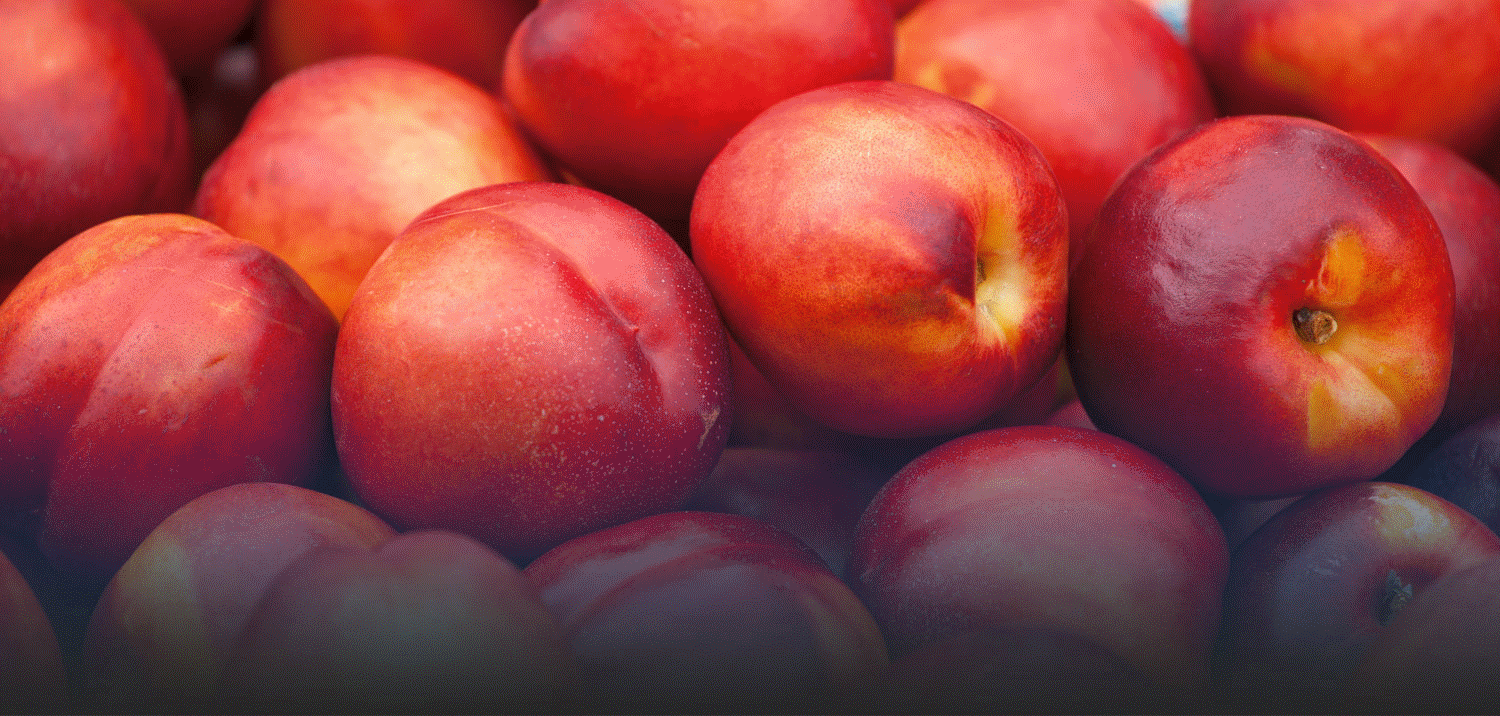



The nectarine (Prunus persica var. nectarina) has been known and described for nearly as long as the peach, but its origin is not known. Because nectarines may have arisen from peach seeds, most of the world’s peach-growing areas have also introduced nectarine varieties.
Peach and nectarine trees have similar leaf characteristics and growth habits. Both have varieties with large and small petaled flowers. Most nectarine varieties grown in California have large flowers, because of a genetic character specifically associated with nectarines; unlike peaches, nectarine fruits lack pubescence (fuzz). Horticulturists have described the nectarine as a fuzzless peach because the difference between the two fruits is due to a simple recessive gene. For merchandising purposes, however, the commercial trade prefers to treat nectarines as a separate and distinct fruit.
California peach and nectarine trees are grown with almost the same irrigation, nutrition, cultivation, and harvesting methods. Differences occur in susceptibility to brown rot and flower thrips; nectarines are most susceptible to both and require special protection. California peaches and nectarines produced for fresh consumption are generally known as “freestone” fruits, but in addition many varieties are actually semi-free, semi-cling, or cling, with yellow, red, or white flesh. Most “clingstone” peach varieties are grown for canning. With one or two exceptions shipping varieties have melting flesh, while canning clingstones have a nonmelting flesh characteristic.